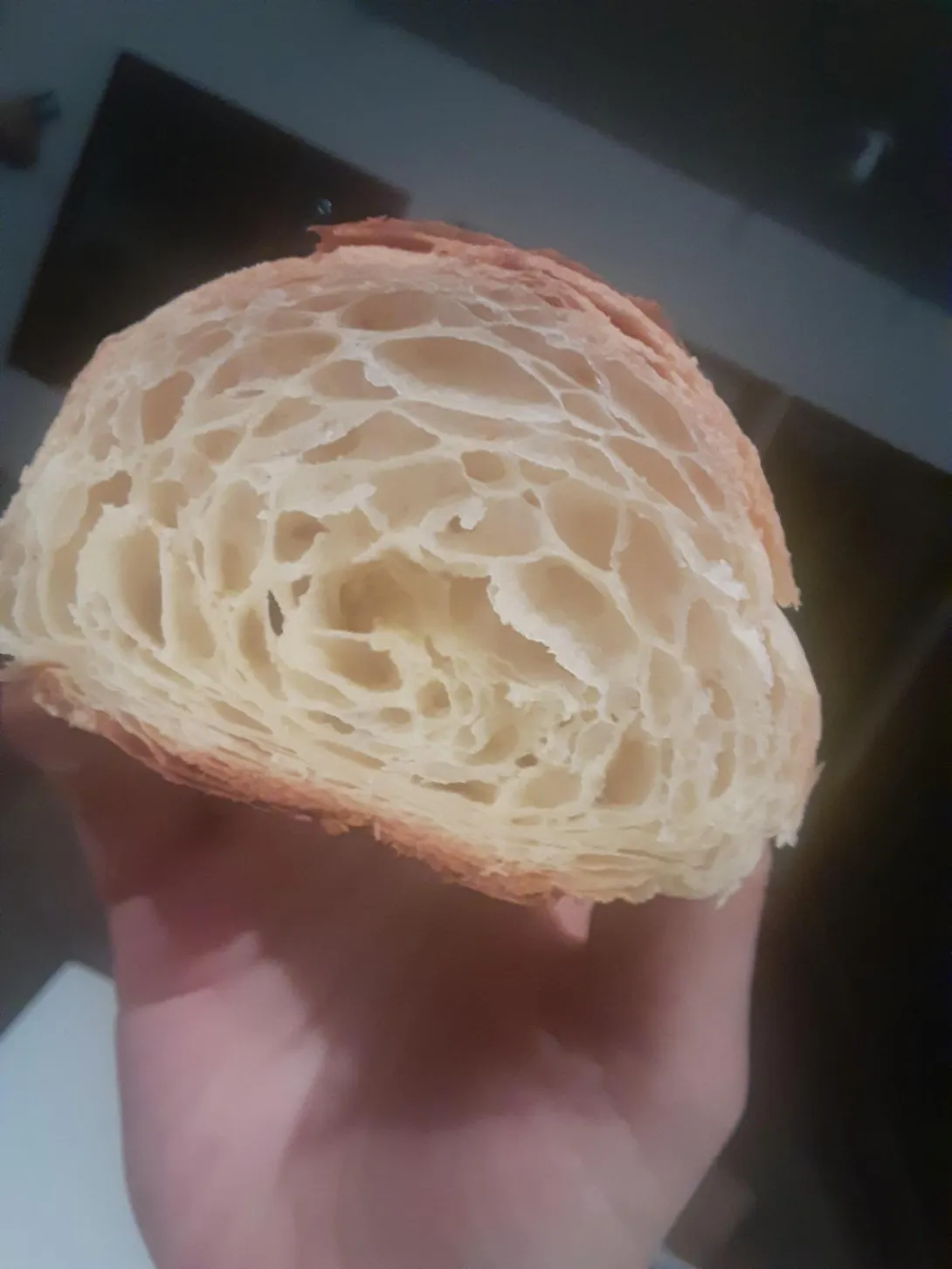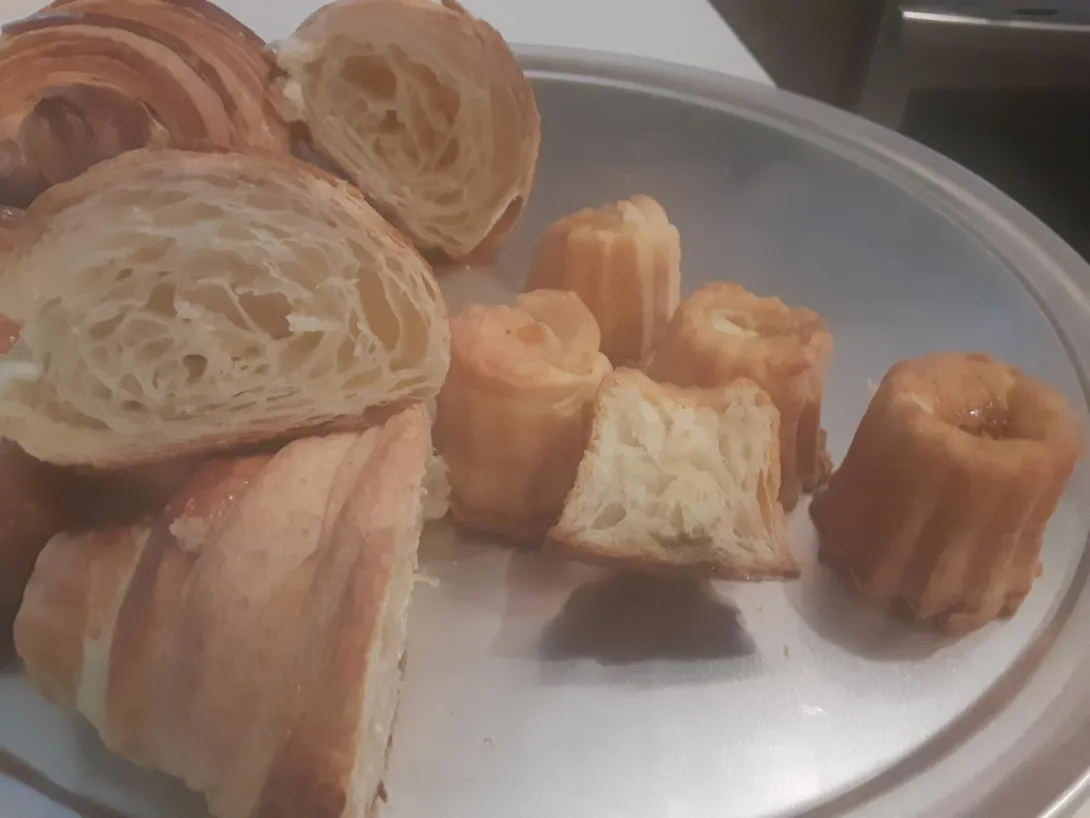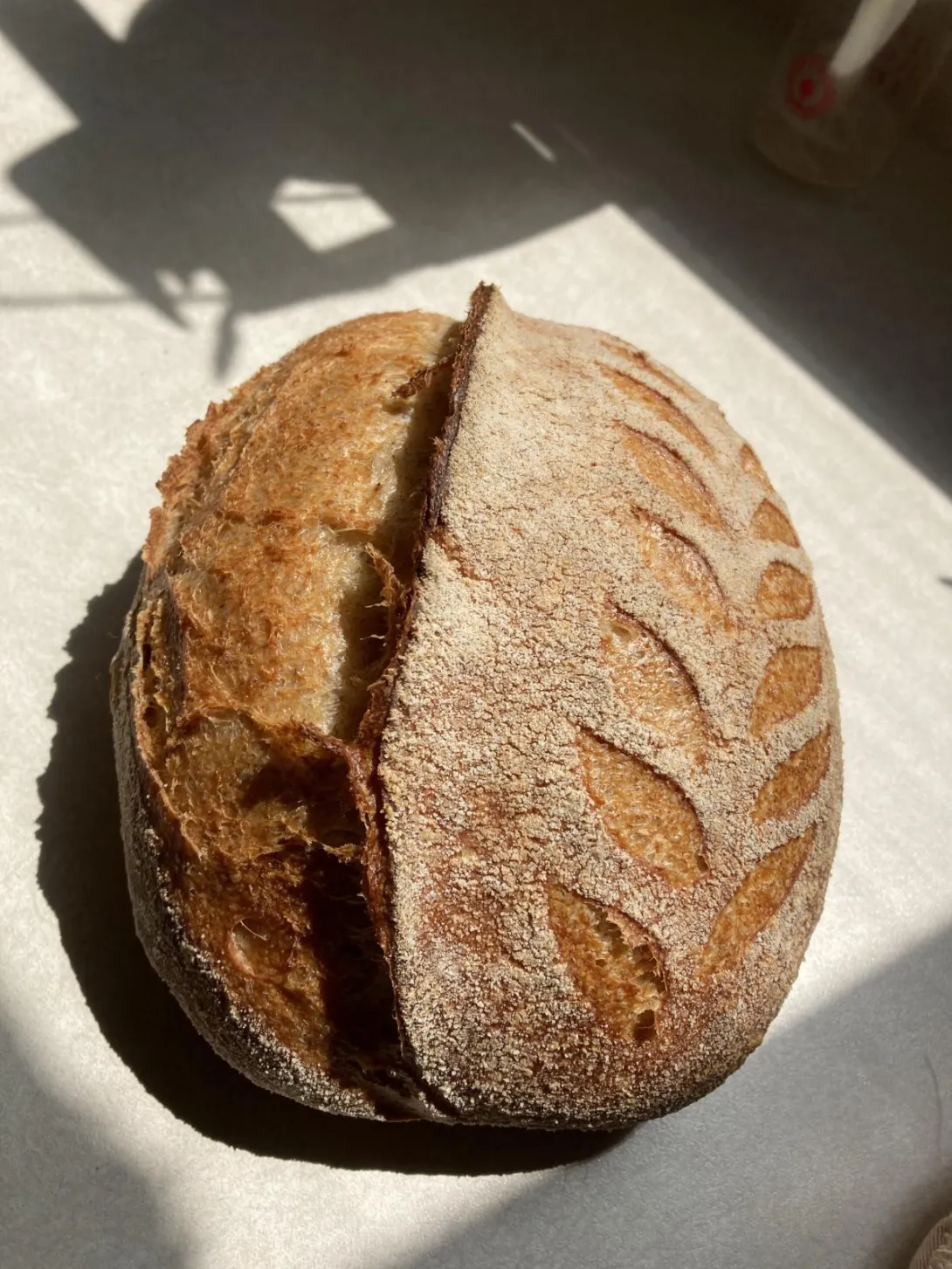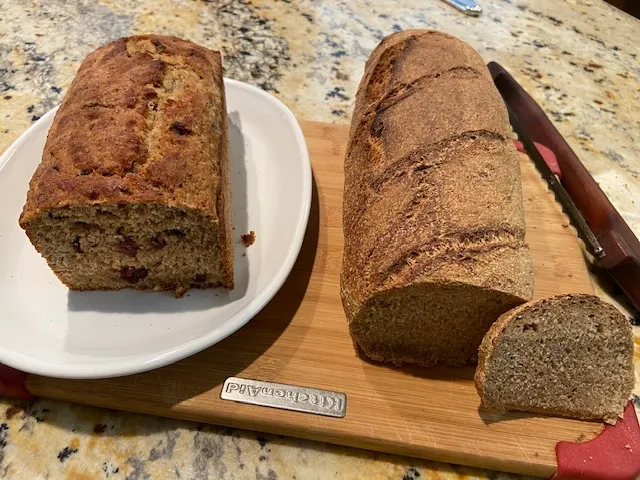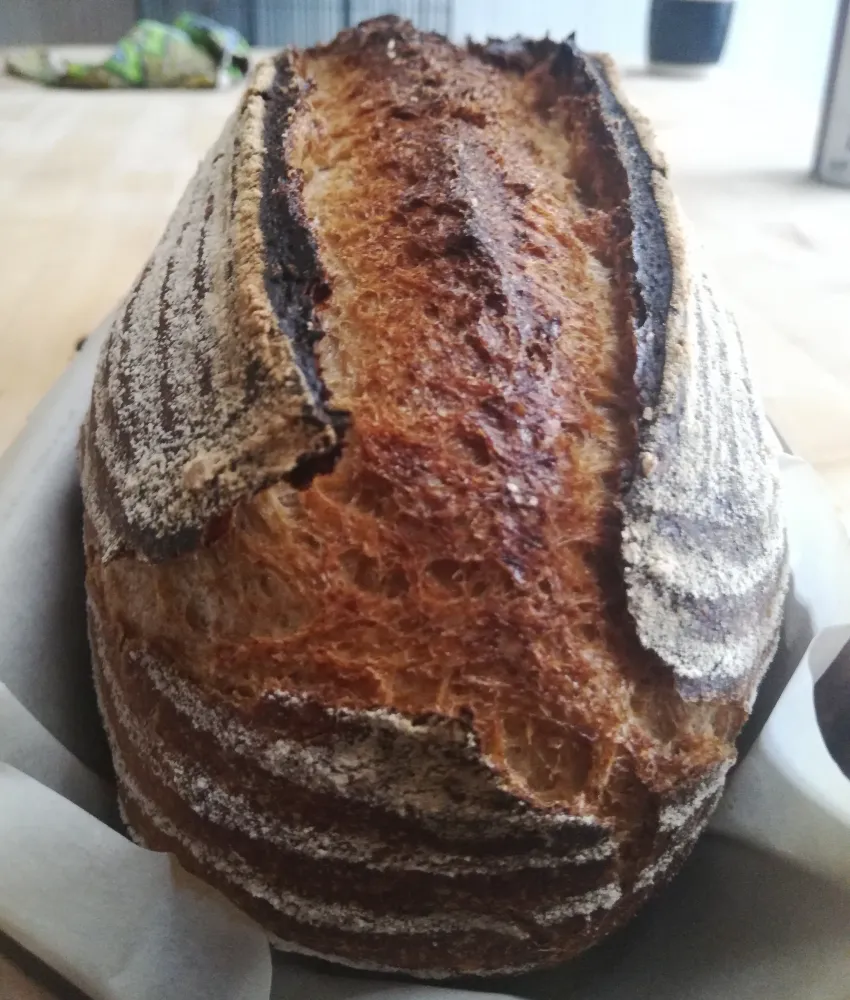Hitting my stride

It has taken me a while to make real progress with sourdough, but after a few weeks of nurturing my starter and training myself to be more patient during the bulk ferment and proofing, I'm finally getting somewhere. Really pleased with how the crust and crumb turned out on this one. Getting a decent score is my last real hurdle; I can get an ear to open up quite nicely, but my diamond and box cuts often seal up as the loaf bakes. Still playing with some parameters there. Getting sort of back to work has cut down on time available for baking, alas.
- Log in or register to post comments
- 5 comments
- View post
- SirSaccCer's Blog
